Deciding what lenses to purchase becomes a struggle for most photographers at one time or another.
Personally, I try to find the most value I can in my lens purchases.
This value can come from quality and usefulness of the lens versus its cost, or from overall versatility (which is normally what I look for in my purchases).
However, for many photographers, price is a deciding factor in buying lenses.
The lenses below hit the sweet spot when it comes to value for various different photography scenarios.
As photographers, our needs will vary depending on a variety of factors, most importantly based on what subjects we want to shoot.
Obviously, “inexpensive” is going to be a different number for everyone.
So, in this case, “inexpensive” lenses for Nikon cameras will have to do with the overall value they provide.
If you are looking for the best lens for a specific situation and aren't sure where to start, check out the Lens Finder here.
Nikon 50mm F/1.8G
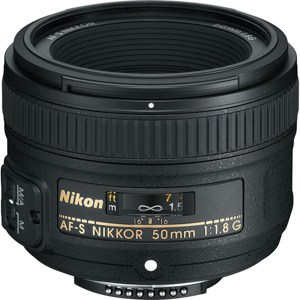
A 50mm f/1.8 lens is often recommended as the second lens purchase a photographer should make once the urge sets in to move past the traditional 18-55mm kit lens.
This is also the exact advice I was given by a coworker (which I ultimately followed) when I was ready for a new lens.
While the 50mm f/1.8 is not necessarily be the must-have lens for all photographers, it does offer great value by being a useful mid-range focal length and having a very fast aperture at f/1.8 (which lets in a lot of light and it great for playing with a shallow depth of field).
It’s also worth mentioning that the lens is very sharp.
This versatility makes the 50mm lens useful for types of photography ranging from portraits to astrophotography, especially when you consider the price.
Keep in mind that there is also a cheaper Nikon 50mm f/1.8D.
While still a good lens, the f/1.8D version of the lens does not autofocus with some Nikon camera bodies, so be sure to check if it is compatible with your camera before purchasing the lens and thinking you’re getting the same lens for a lesser price.
The Nikon 50mm f/1.8G works on full-frame and crop sensor cameras. Check the price for the Nikon 50mm f/1.8G on Amazon here.
You can also check KEH Camera to see if you can save some money on a REALLY high quality used one: Used Nikon 50mm f/1.8G on KEH Camera.
Nikon 70-300mm f/4.5-5.6G VR

I recently took the Nikon 70-300mm f/4.5-5.6G VR with me to Death Valley as a way to have a longer lens for detail shots of the badlands and sand dunes.
My first instinct was to bring something like the Sigma or Tamron 150-600mm lenses.
However, after further thought, the Nikon 70-300mm offered a significantly lighter and more compact lens that I could bring out on hikes than the 150-600mm options.
While it is not as sharp as the Nikon 70-200mm f/2.8 (and has a slower and non-constant aperture), the 70-300mm provides a great option for someone looking to get a good telephoto lens for less than 1/5th the price of the 70-200mm, especially if you don’t require the low-light capabilities of its more expensive cousin.
The Nikon 70-300mm f/4.5-5.6G VR works on full-frame and crop sensor cameras. Check the price for the Nikon 70-300mm f/4.5-5.6G VR on Amazon here.
You can also check KEH Camera to see if you can save some money on a REALLY high quality used one: Used Nikon 70-300mm f/4.5-5.6G VR on KEH Camera.
Nikon 24-120mm f/4G ED VR
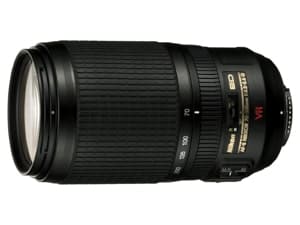
The Nikon 24-120mm f/4 lens is a value purchase for a number of reasons.
First, the 24-120mm focal range is useful in disciplines ranging from landscapes to street photography to subjects requiring a bit of telephoto capabilities.
It accepts standard sized 72mm screw-on filters, and is a good all-around lens that is versatile enough to fit many of your needs.
At this price, this lens may not seem like a value purchase.
However, since most people get this lens as a kit when buying a new Nikon camera body, this bundle essentially makes the price of the glass more like $500.
Because of this, you can pick one up used in very good condition for around $500 which is a much more enticing value.
The Nikon 24-120mm f/4G ED VR works on full-frame and crop sensor cameras. Check the price for the Nikon 24-120mm f/4G ED VR lens on Amazon.
You can also check KEH Camera to see if you can save some money on a REALLY high quality used one: Used Nikon 70-300mm f/4.5-5.6G VR on KEH Camera.
Nikon 18-55mm
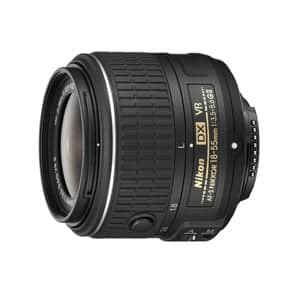
I know I’ll get roasted for this.
Yeah, I get it, it’s the kit lens, but it’s the kit lens for a few good reasons.
18-55mm is a great range to start off with when beginning with photography and deciding which aspects of it interest you.
The 18-55mm lens won’t excel in many areas, but it does many things respectably well.
Its focal range gets wide enough for landscape shots and narrow enough for portraits, and the f/3.5 aperture on the wide end means I could take a good photo of the Milky Way if I wanted to.
Plus, you can’t beat the price.
Don’t get me wrong, I now shoot with a full-frame camera and “professional” quality lenses and no longer have an 18-55mm in my bag, but I still have photos in my portfolio of which I sell prints that were taken with my old 18-55mm.
I dare you to tell me with confidence which ones those are. I ultra-turbo-triple-dog-dare you. Yeah, not so tough now, are you???
The Nikon 18-55mm works on crop sensor cameras. Check the price for this lens on Amazon here.
You can also check KEH Camera to see if you can save some money on a REALLY high quality used one: Used Nikon 18-55mm on KEH Camera.
Tokina 16-28mm
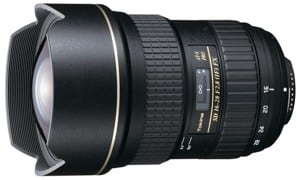
If landscape photography and fast aperture lenses interest you, the Tokina 16-28mm lens should be on your radar.
This is a sharp lens that allows landscape photographers to get an ultra-wide zoom lens capable of taking astrophotos for a super inexpensive price compared to similar options such as the Tamron 15-30mm and Nikon 14-24mm.
Not without its flaws, the Tokina 16-28mm cannot accept screw-on front filters, and does have some issues with flaring when it encounters super bright light sources, but for the price, these are things you may be able to look past due to the quality and value you will be getting overall.
The Tokina 16-28mm can be used on full-frame and crop sensor cameras. Check the price of this lens on Amazon here.
You can also check KEH Camera to see if you can save some money on a REALLY high quality used one: Used Tokina 16 – 28 mm on KEH Camera.
Nikon 20mm f/1.8G
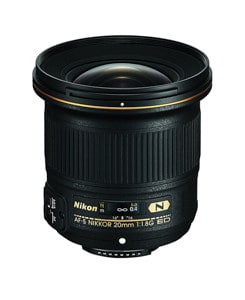
The Nikon 20mm f/1.8G hits a lot of the sweet spots that many lenses in its focal range lack.
The 20mm range certainly isn’t as wide as something in the 14mm to 16mm range, but 20mm is certainly no slouch when it comes to a wide field of view.
In addition, the 20mm f/1.8G boasts great sharpness, the ability to accept front screw-on filters, and its f/1.8 max aperture is something that other lenses in this focal range can’t currently touch, making it an interesting option for low-light situations at a far lower price than other ultra wide-angle options.
The Nikon 20mm f/1.8 can be used on full-frame and crop sensor cameras. Check the price of this lens on Amazon here.
You can also check KEH Camera to see if you can save some money on a REALLY high quality used one: Used Nikon 20mm f/1.8G on KEH Camera.
Nikon 28-300 f/3.5-5.6G
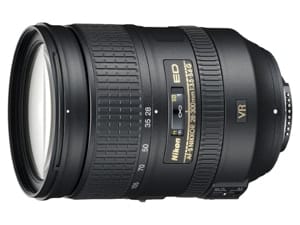
The Nikon 28-300mm is the ultimate walkaround lens.
If you want to stick one lens to your camera and have the versatility to capture most shots without reaching into your bag for different glass, the Nikon 28-300 deserves a look.
The lens has a fast f/3.5 aperture on the wide end and has vibration reduction to help stabilize images you want to capture at 300mm.
For the ultimate versatility, the 28-300mm is a serious value.
The Nikon 28-300mm f/3.5-5.6G can be used on full-frame and crop sensor cameras. Check the price of this lens on Amazon here.
You can also check KEH Camera to see if you can save some money on a REALLY high quality used one: Used Nikon 28-300mm f/3.5-5.6G on KEH Camera.
Tamron 28-75mm f/2.8
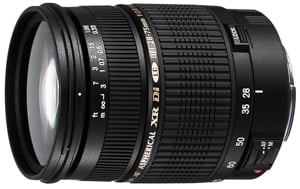
Unconventional focal range?
Yes. Great lens at a third of the price of its Nikon counterpart?
Also yes.
Jim Harmer spoke highly of the Tamron 28-75mm when writing about his 8 Favorite Inexpensive Lenses for Canon, and I see no reason not to continue that trend with Nikon.
While offering some duds in their lineup, Tamron also has some winners (the 70-200mm f/2.8 and my all-time favorite 15-30mm included in that list), and the 28-75mm is in that boat.
It covers the mid-range zoom focal lengths, making it good for events such as weddings, while also offering a constant f/2.8 aperture for a nice shallow depth of field and help in low light situations.
The Tamron 28-75mm f/2.8 can be used on full-frame and crop sensor cameras. Check out the price of this lens on Amazon here.
You can also check KEH Camera to see if you can save some money on a REALLY high quality used one: Used Tamron 28-75mm f/2.8 on KEH Camera.
For lense recommendations from other photographers, join the Improve Your Photography Facebook Group! Click here to join! Once you are accepted, ask away!
Disclaimer: Improve Photography is a participant in the Amazon Services LLC Associates Program, an affiliate advertising program designed to provide a means for sites to earn advertising fees by advertising and linking to Amazon.com




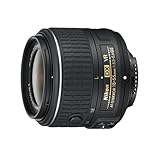
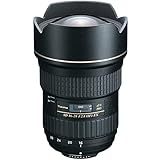
I would add the Sigma 105mm f/2.8 Macro, great portrait lens, amazing quality, I actually use this until I can get myself a 70-200mm f/2.8 as it is too expensive for a start-up business.
Not sure I would put tge 20mm 1.8 on this list. It is a great lens, but I would not call $700 inexpensive for a prime.
Also Tamron 24-70 VC f2.8 goes rather cheap these days for around $750.
Another excellent lens is 24-85 VR that can be had at or under $300.
The kit 18-55 VR is indeed a nice lens to have for its size. When traveling it pairs very well with something like D5300
Tina, take a look at older Nikon 80-200 f/2.8 (two-ring version). It is optically superb and could be had for around $500 used.
Another lens to look for is Tamron 70-200 VC f2.8. With the release of the new version prices of the old one are falling now.
I agree that the Nikon 24-120 f/4 is an excellent lens. For 6 years it has been my main glass for landscape photography for both the D300S and D810 cameras. At 24mm it’s a wide angle, and at 120mm (or ~200mm in D810 DX mode) it’s a short telephoto. This has served my amateur photography needs so well that I never considered a replacement. I also appreciate the wide f/4 constant aperture.
I would add the Sigma 17-50mm f/2.8. It can be had used for under $300 now after a recent rebate by Sigma. I use that thing on my crop sensor body and it has exceptional sharpness and image stabilization.
I did not even know about the 20mm 1.8, but considering the cost of 2.8 version I have, I would have been surprised if it was cheap. Also, is it worth having a wide angle with as wide an aperture as that? Sure, you need it for milky way or northern lights shots, but in the context of this article, I do not think it is a good option. I think this is where the Rokinon range has a place. They are pretty good lenses for astrophotography and cheaper, mainly because they are not as well built.
Being new to photography my friend lent me his TAMRON 28-75MM F/2.8 as well as a few other lenses and I pretty much never take the Tamron off. It has a wider aperture than the majority of the zoom lenses I see and it can shoot some pretty good macro shots as well.